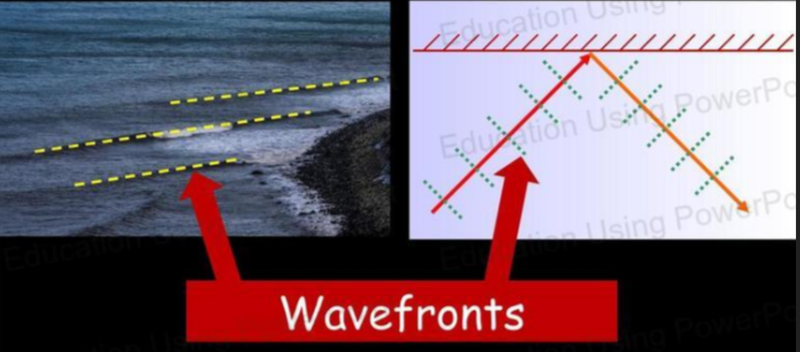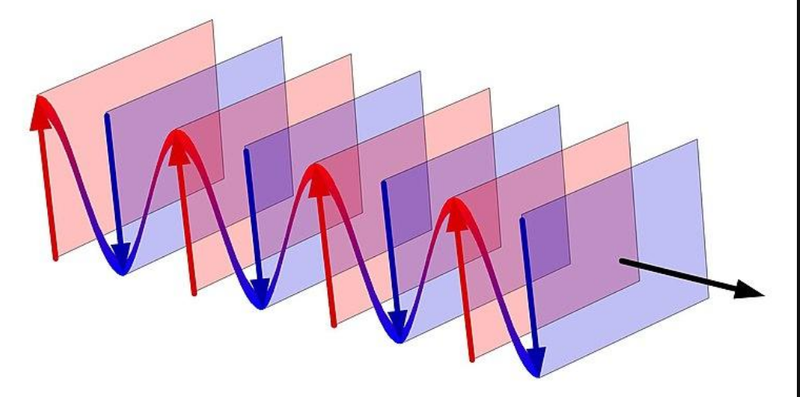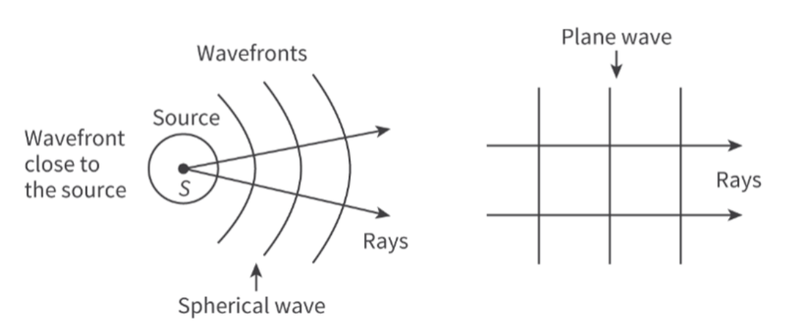- Waves travelling in two and three dimensions can be described through the concepts of wavefronts and rays.
Wavefronts
- A wavefront is a line drawn at the crest of a wave when viewed from above.
- They are perpendicular to the direction of velocity and are equally spaced.
- For transverse waves the wavefront is drawn at the maximum point and for longitudinal waves it is drawn at the compressions.
- While it is possible to draw wavefronts at any point on a wave as long as they are evenly spaced, crests and compressions are generally chosen.

- It joints neighboring points moving in phase with each other.
- Wavefronts can also travel in three dimensions.
- They appear as cross-sectional planes.
- Even if a wavefront is curved to being with, as it gets further from the point source, wavefronts become more "flat" or planar.

- Such a wave can come from a point source of sound or light, or even from an explosion.
Rays
- Rays are lines showing the direction in which wavefronts are moving.
- They also show the direction in which energy is transferred, and thus are parallel to the direction of velocity.
- While rays branch apart when close to the source of a wave, as the distance from the source increases they also become more planar.
- Rays are always at right angles to wavefronts.\

Sources